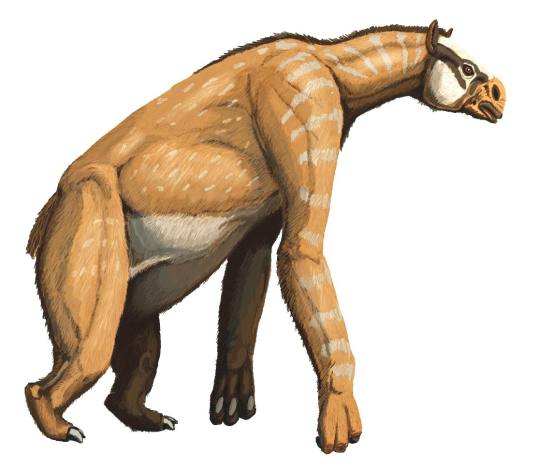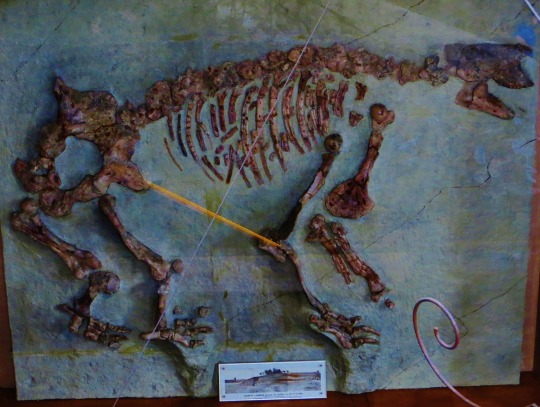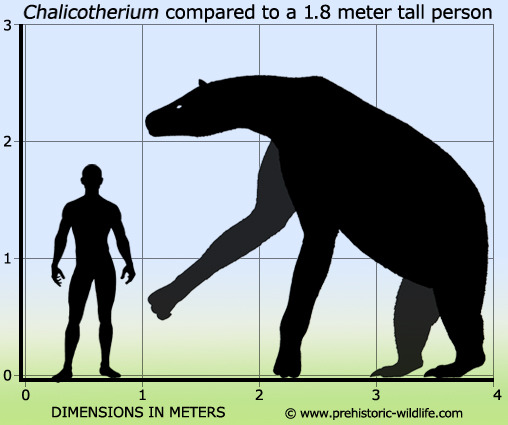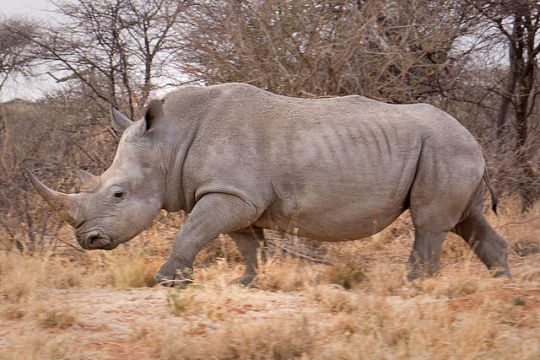#Thērion
Text

Satan (the dragon; on the left) gives to the beast of the sea (on the right) power represented by a sceptre in a detail of panel III.40 of the medieval French Apocalypse Tapestry, produced between 1377 and 1382.
#christianity#book of revelation#the beast#Thērion#Antichrist#The First Beast#the bible#eschatology#jehovah#yahweh#el#jesus christ#jesus of nazareth#angel of light#end times#armageddon#Saint John the Evangelist on Patmos#John of Patmos#Patmos#St. John of Revelation#Island of Patmos#Judaism#the devil#medieval#art
12 notes
·
View notes
Text






Chalicotherium
(temporal range: 15.97-5.333 mio. years ago)
[text from the Wikipedia article, see also link above]
Chalicotherium (Ancient Greek χαλιξ/khalix, khalik-: pebble/gravel + θηρίον/thērion, diminutive of θηρ/thēr : beast) is a genus of extinct odd-toed ungulates of the order Perissodactyla and family Chalicotheriidae. The genus is known from Europe and Asia,[1] from the Middle Miocene to Late Miocene.
This animal would look much like other chalicotheriid species: an odd-looking herbivore with long clawed forelimbs and stouter weight-bearing hindlimbs.
The type species, Chalicotherium goldfussi, from Late Miocene Europe, was described by Johann Jakob Kaup in 1833. When the French naturalist George Cuvier first received a cleft claw from Eppelheim, Germany, he identified it as the toe bone of a gigantic pangolin.
16 notes
·
View notes
Text
Word of the Day
treacle
noun
1 British a thick, sticky dark syrup made from partly refined sugar; molasses.
2 cloying sentimentality or flattery: enough of this treacle—let's get back to business.
ORIGIN
Middle English (originally denoting an antidote against venom): from Old French triacle, via Latin from Greek thēriakē ‘antidote against venom’, feminine of thēriakos (adjective), from thērion ‘wild beast’. Current senses date from the late 17th century.
0 notes
Text
Flat-nosed horn-beast

Ceratotherium simum - white rhinoceros
From Greek keras (”horn”) + thērion (”beast”) and simos (”flat-nosed”).
Rhinoceros
From Greek rhis (”nose”) + keras (”horn”).
image credit: Ikiwaner [GFDL 1.2 (http://www.gnu.org/licenses/old-licenses/fdl-1.2.html)]
21 notes
·
View notes
Photo

هیولا (یونانی :Θηρίον، Thērion) نام دو موجود است که از آنها در کتاب مکاشفه یوحنا از عهد جدید نامبرده شدهاست و با مسائل آخرالزمان در ارتباط است. اولین هیولا از دریا خارج میشود و قدرت خود را از اژدها میگیرد. اولین هیولا در مکاشفه ۱۱:۷ مورد اشاره قرار گرفتهاست و از اعماق دریا بیرون میاید. هیولای دوم از زمین بیرون میاید و تمامی مردم دنیا را مجبور به پرستیدن هیولای اول میکند. هر دو هیولا با اژدها همکاری کرده و در برابر خدا هستند. آنها مومنان را آزار میدهند و کسانی را که تصویر هیولا را نمیپرستند و کشورهای دنیا را مجبور به حضور در جنگ آخرالزمان میکنند. هر دو هیولا توسط عیسی شکست داده میشوند و به دریاچه آتش که در مکاشفه ۱۹ اشاره شدهاست انداخته میشوند. ✝️✝️✝️✝️✝️✝️✝️ (در Niedersachsen, Germany) https://www.instagram.com/p/B9dB1b-hTip/?igshid=1te84qsg6vg3w
0 notes
Text
teratheresh
n. [mass noun] a colourless liquid compound which is a constituent of most proteins.
Chem. formula: C6H2(OH)2.
late 19th century: from TERA- ‘three’ + Greek thērion ‘testing’ + -INE4.
0 notes